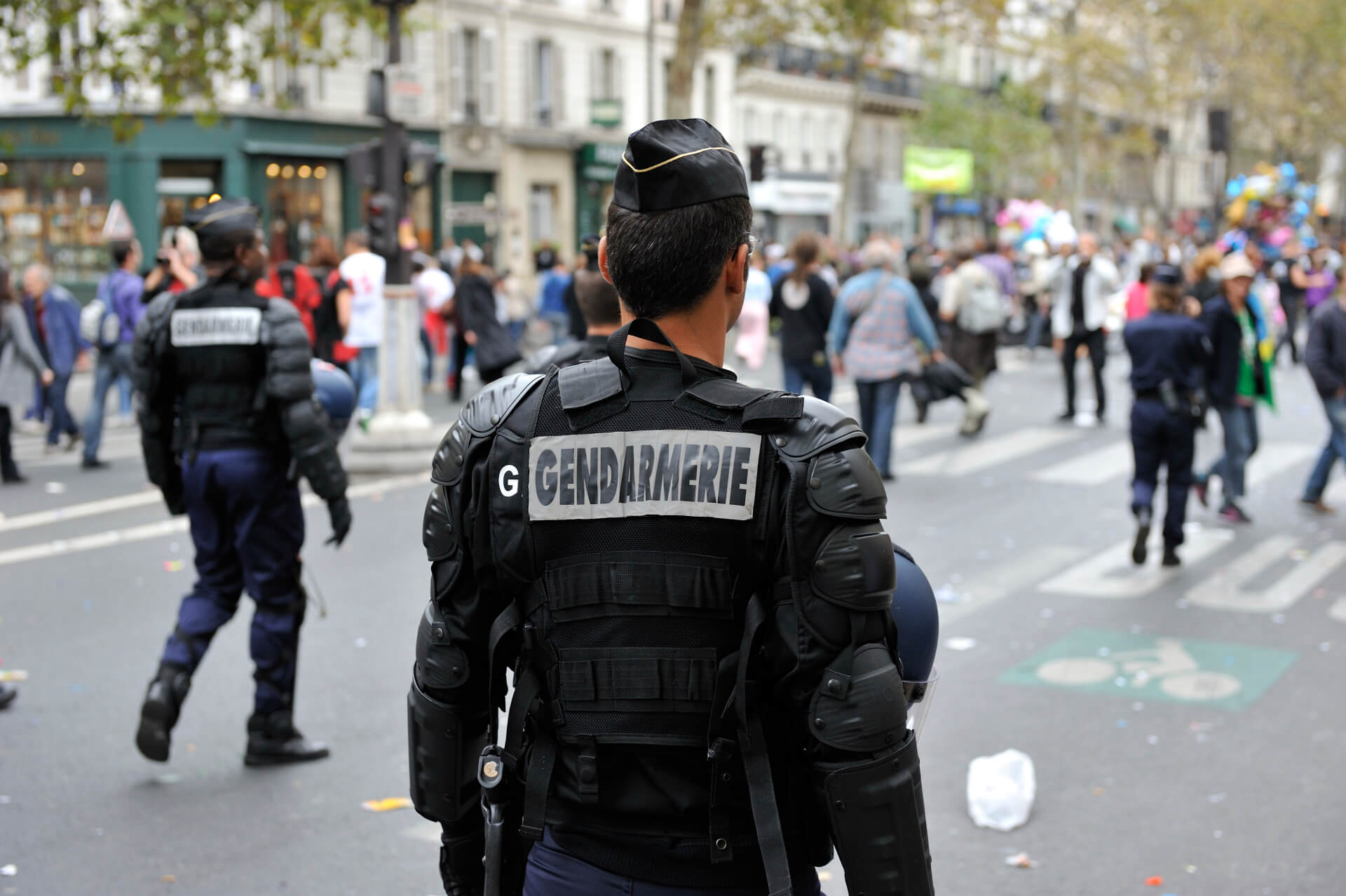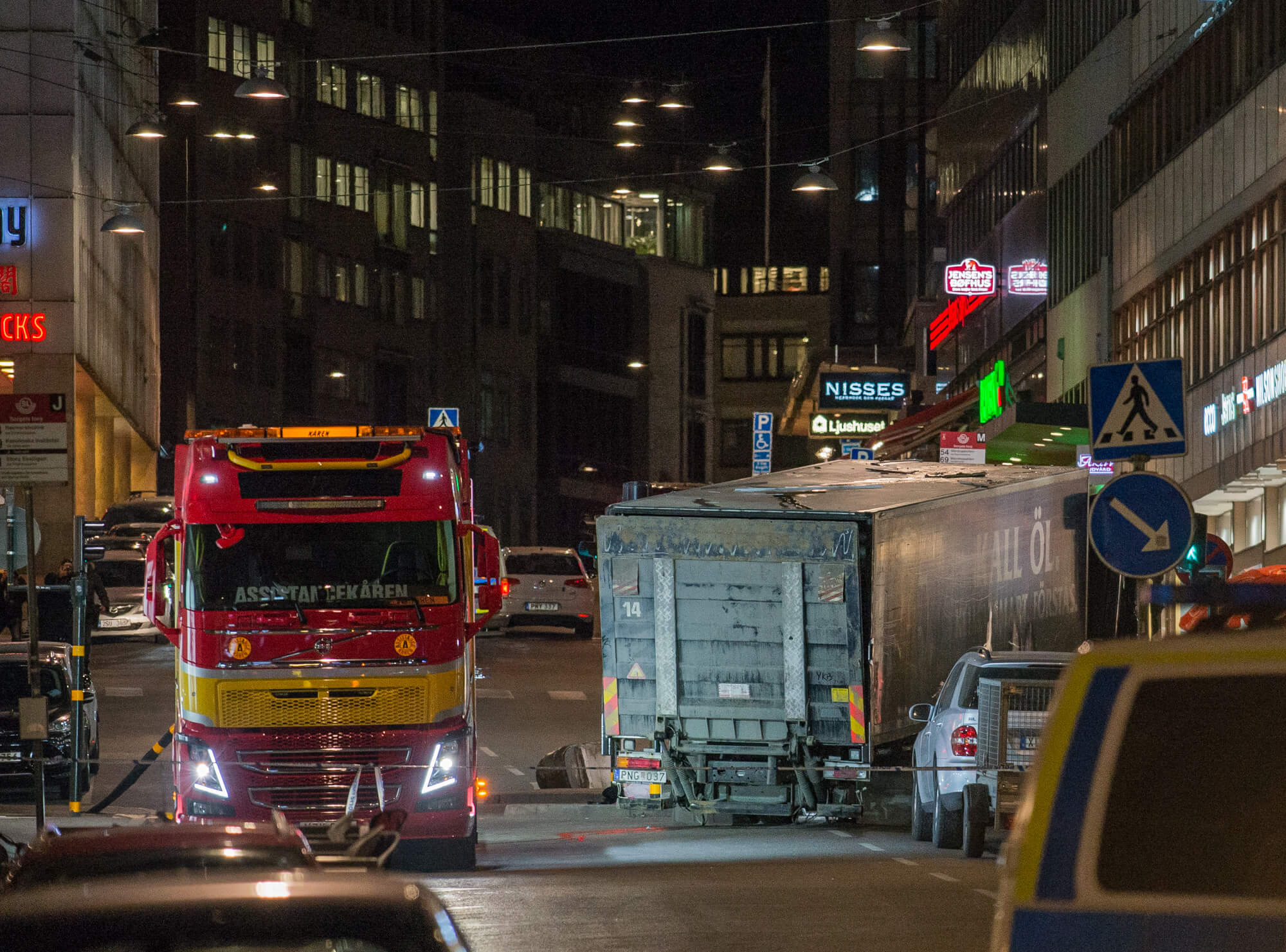
Facing the evolving jihadi threat in Europe
Intelligence services have long feared the return of foreign fighters to Europe. However, most recent terrorist attacks in Europe were committed by homegrown violent extremists, acting alone or in group. After years of intense focus on “foreign terrorist fighters” (FTF), security services are now obsessed with so-called “homegrown terrorist fighters” (HTF). As the jihadi threat evolves, counterterrorism adjustments are necessary.
Recent attacks in Belgium, France or Germany shared a number of similarities: they involved homegrown terrorists, lone attackers, often unknown to the authorities, sometimes with some form of mental disorder. Such evolution is challenging some of our basic knowledge on terrorism. While terrorists are not “crazy people”, cases of attacks by mentally-challenged individuals have become more frequent; while “lone wolves” were said to be exceptions, those exceptions seem to have become more noticeable as well.
Above all, this evolution is challenging the already difficult task of security and prevention services in Europe. Whereas most counterterrorism measures taken over the past five years focused on FTF, notably to prevent Europeans to join terrorist groups abroad, new measures are now required to confront HTF. But how does one identify, and eventually prosecute, signs of radicalization leading to violence? Our understanding of this process is only incomplete, and therefore our responses can only be imperfect.
Clear-cut distinctions do not reflect the wide scope of ties that can exist between a radicalised individual and a terror group.
Foreign fighters and homegrown terrorists present different profiles and, therefore, different risks. FTF are usually considered to be more dangerous, as they have been further radicalised ideologically and have received military training. This makes them more “professional” terrorists. They may also have developed particular skills or competences that could be used in a terrorist plot at home, such as bomb-making. Homegrown terrorists are, by contrast, more often labelled as “amateurs”. Without specific training, they are more likely to commit mistakes while planning an attack, possibly leading to the plot’s failure. Some recent attacks in Europe were strikingly amateurish. A number of studies suggest that attacks by homegrown terrorists are more likely to fail or to have little impact, whereas plots involving foreign fighters are more likely to succeed, with a higher degree of sophistication, although there are notable exceptions.
Next to their skills and commitment, FTF are also traditionally perceived as more connected to a structured terrorist organisation or network. Indeed, foreign fighters have established very formal ties with the terrorist group they joined, and with its leadership. Some FTF have been sent back to Europe with a clear mandate to conduct operations in the name of the Islamic State. By contrast, homegrown terrorists are often described as “lone wolves”, self-radicalised on the internet, with absolutely no link with any member of a terror group. While this isolation can be seen as a weakness, due to a lack of instructions and training, it is also a strength in the sense that it makes them virtually invisible to the security services.
Yet, such clear-cut distinctions do not reflect the wide scope of ties that can exist between a radicalised individual and a terror group. Not every HTF is a “lone wolf”. Some have established physical or virtual ties with members of a terrorist organisation in Europe. HTF can also operate in groups, as illustrated in Barcelona and Cambrils. Moreover, not every returnee is a ticking time bomb. Some were ready to fight the defensive jihad in Syria, but not to strike their homeland; some deserted ISIS, leaving terrorism behind out of disillusion.

Beyond all of the differences, there is also one undeniable similarity: FTF and HTF are all homegrown. All European foreign fighters are…Europeans (citizens or residents), who mostly radicalised in Europe. Of course, this can hide different realities, different senses of “belonging”. Nevertheless, this observation is fundamental, because it indicates that the roots of the current threat, and its solutions, are to be found domestically in the first place. FTF and HTF share some fundamental similarities and overlap. They are, in fact, the two faces of the same coin; they belong to the same jihadi wave.
Leaderless jihad
A few years ago, European security services were mostly concerned with plots ‘directed’ by ISIS leadership, such as the coordinated attacks in Paris (2015) and Brussels (2016). Nowadays, attacks seem to be merely loosely ‘inspired’ by the group’s propaganda. Between these two extremes, plots can be ‘enabled’ by the Islamic State. The so-called ‘veteran effect’, according to which returning fighters can radicalise, recruit, train or conspire with homegrown terrorists, is well documented. Furthermore, ISIS has successfully made use of the internet to foment plots through its ‘virtual planners’, offering tactical and technical guidance to anyone interested via encrypted communication.
Like al-Qaeda before, the Islamic State is evolving from a highly centralised, hierarchical structure, culminating with the proclamation of the caliphate in 2014, to a decentralised, leaderless movement. From Asia to Africa, a number of regional groups have already pledged allegiance to ISIS, while autonomous cells and “lone wolves” are acting on its behalf in Europe, North America, Australia and elsewhere. The “army of one” had already been called upon by the group’s official spokesman Abu Mohammad al-Adnani, in September 2014, during the heyday of the caliphate. But what was only one option among several offered to jihadi candidates in 2014, has now become the dominant and only strategy. Jihad in Europe seems today more a matter of visibility than effectiveness; where quantity outweighs quality.
Although this evolution has been theorized by some jihadi scholars, such as Abu Musab al-Suri, the importance of these ‘strategists’ should not be exaggerated. The evolution of the jihadi threat in Europe is largely dictated by circumstances and opportunities. Circumstances have indeed fundamentally changed over the past couple of years. The accumulation of military defeats and the death of some senior members have forced the group to loosen control over its territory and networks. The Syrian jihad has lost its appeal, while the adoption of more stringent measures across Europe to prevent people from travelling to the region have largely contributed to the erosion of the FTF phenomenon. ISIS now has no other choice than to increasingly rely on homegrown fighters worldwide. For al-Suri himself, the leaderless jihad was a strategy of last resort, when all other options had failed.
It should further be recognised that the Islamic State had a unique opportunity to shift towards a leaderless jihad, one that it had largely created for itself. Never before had any other jihadi group succeeded in attracting so many militants and followers worldwide. From this unprecedented pool of “sympathizers” to the jihadi cause – it is estimated that there are more than 50,000 ‘radical islamists’ in Europe – an unprecedented number of homegrown terrorists could emerge. In short, ISIS relies more on homegrown fighters because it must, but also because it can.
Never before had any other jihadi group succeeded in attracting so many militants and followers worldwide
The virtual caliphate
ISIS is losing ground, but is not dead yet. Possibilities exist for the group to survive and even re-emerge in some parts of Syria and Iraq, perhaps under a new name. Senior leaders could alternatively decide to migrate to other, more permissive jihadi theaters to rebuild what has been lost. More fundamentally, however, the jihadi threat in Europe will not vanish miraculously following the fall of the caliphate, or the death of its leaders.
The jihadi movement will survive ISIS anyway. A virtual caliphate is already emerging on the ruins of the caliphate in the Levant. It is virtual in the sense that it does not require any physical territory. The jihadi ideology focuses on the conquest of vulnerable minds, not lands. It is also virtual for it relies on the internet and social media to propagate its ideas, recruit new militants, connect them together, and encourage or even guide violent actions. This is not to say that the jihad is about to become online-based only, but rather that the internet is playing a growing role in it.
The central leadership of the jihadi movement may be somewhat weakened today, but the network of fighters and the militant base remain largely unaffected. If anything, more foreign fighters are expected to return home in the coming months, while the militant base has stabilised at significant numbers, and is possibly still expanding.
The contours of the new jihadi threat in Europe will therefore be determined by the interplay between veteran fighters, acting as new hubs or ringleaders; the militant base, as supporter and cannon fodder; and the internet, as facilitator and echo chamber. There is much similarity with al-Qaeda’s threat in the 2000s, and thus there are, also lessons to be drawn from previous successes and failures. The main, albeit fundamental difference comes from the fact that there are now more veteran fighters than ever before, a broader and growing militant base, and a more omnipresent internet.

Implications and priorities
The implications of this new threat for our counter-terrorism approach are numerous, but I focus on four main ones. First, returnees are likely to play a key role in the recruiting and training of the next jihadi wave. It is therefore imperative to monitor them very closely, and seek to limit their influence as much as possible. That work starts imperatively in prison, where a number of them are already detained. Prisons have always been an incubator for radicalisation and violence, but there are many indications that the problem is growing out of proportion. Some recruiters seem to see jail as “jihadi universities”, while programmes focusing on de-radicalisation or disengagement remain underdeveloped in prison. Mentoring, as well as rehabilitation and reintegration programmes, should also be imperatively implemented. Overall, there is still a need for a thorough response to returning fighters.
Second, if homegrown terrorism is considered a key threat, then more efforts should be invested in prevention work. While the fall of the caliphate has affected the attractive power of the jihadi adventure (the main “pull factor”), the root causes of radicalisation (the so-called “push factors”) remain largely unaddressed in our Western societies. As long as we do not work on these “push factors” and on the conducive environment to violent extremism, there will be a pool of candidates available to jihadi recruiters. Downsizing that reservoir should be a priority. Although a comprehensive response to radicalization is needed, there is still a tendency to frame our counter-terrorism response in overly security terms. While the strengthening of security apparatus is required in some countries, that approach is only part of the answer. You cannot face an “army of one” with just one army. Hard security only constitutes the last line of defense against violent extremism.
Third, since the internet is playing a growing role in the virtual caliphate, our counter-terrorism response should also increasingly be focused online. While a lot of efforts have been developed in order to take online jihadi contents down, more can still be done in partnership with internet companies. Counter-messaging and alternative messaging campaigns should also be promoted. If radicalisation, recruitment and training increasingly take place on the web, intelligence services must also significantly strengthen their online presence.
Finally, while terrorism and radicalisation must, first and foremost, be addressed domestically, we should not entirely close our eyes on the international dimension of this challenge. On the one hand, more cooperation is required at the European and global levels to address a phenomenon that is indeed transnational. Each country dealing with this unprecedented challenge is learning by doing. More exchanges of good practices should therefore be encouraged and facilitated. On the other hand, we should keep in mind that the jihadi movement will likely seek to upgrade itself again in more hospitable territories, in the Middle East or elsewhere. If circumstances allow, there is no doubt that a new hard core structure will seek to emerge in order to, once again, upgrade the virtual caliphate into a physical one. Preventing this, should also be our priority.
This article is based on a longer publication titled “Europe’s ‘new’ jihad: Homegrown, leaderless, virtual”, published by the Egmont Institute (Security Policy Brief 89, July 2017).







3 Reacties
Load comments
western Foreign Fighter
The principal factors in their ideology. in the consciousness of those goals, propaganda and public communication play a relevant position. this https://www.assignmentcamp.co.uk/
research the evolution of the predominant characteristics of GJM propaganda, studying over 2,000 files issued by means of the GJM between 1996 and 2005.
Treats
This is true that the threats are increasing day by day but this is also true that there must be some steps that needs to be initiated like monitoring the suspected social media accounts and email. https://www.affordable-dissertation.co.uk/buy-dissertation-online-uk/
Security threats
Police must train by the military it is impossible for police with jihadists because they are well train for the big attack they have a well-planed strategy so the police are trained according to the scenario police are mostly trained for civil troubles and theif/Robering attacks.
https://studentshelp.net/
Reactie toevoegen